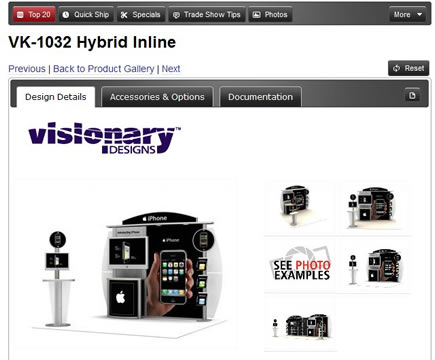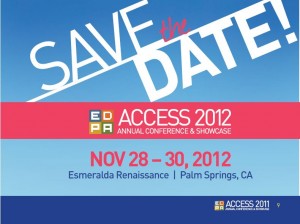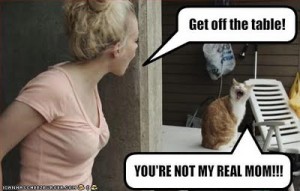How new? It’s so new that it still smells like fresh programming code on a dewy spring day. Inhale and savor the crisp scent, my friend. It’s a new day in the land of Exhibit Design Search (EDS).
Introducing Version 3.2. All your favorite features are still there, like photos, specials, exhibit tips, FAQ, and 28 product galleries, but we reorganized it, made it prettier, and added a couple of new features as well. The new EDS will be much easier to navigate, thanks to a layered approach to the graphic design. The important stuff is upfront like images and the design description. The weightier stuff is one click away like accessories, set-up instructions, and graphic dims.
Changes:
- A Quick Search on the EDS home page. Want a more detailed search, go to the Refine Search option.
- Don’t want to navigate through the product galleries, then use the 10 x 10, 10 x 20, or “Other” button to go directly to Banner Stands, Table Tops, Portable Hybrids, etc.
- There’s a new More button. You can go directly to a Trade Show Calendar, see booth regulations, or click on a specific product gallery.
- The Design Details page is all new. The additional images are next to the main image. There’s a prominent My Gallery button, and the Share This Design, Request a Design, and Send Me More Information are front and forward. All other details are in the Accessories & Options and the Documentation tabs.
Tour the new EDS on Classic’s website. The distributor versions will take about a week or two to implement given all the format changes. But . . . in no time, you’ll see it on your website. When you do, take a deep breath. Everyone has that new EDS smell. To see EDS on an unbranded site, go to www.exhibit-design-search.com.
Let me know if you have any questions. I will be conducting Exhibit Design Search training via GoToWebinar in about a month.
p.s. A very special thanks to Tony Bennett, our gifted web developer, for his insights and his patience as we slogged through concept after concept and more tweaks than a NASCAR stock car on race day.
–Mel White
http://www.linkedin.com/in/melmwhite
mel@classicexhibits.com












